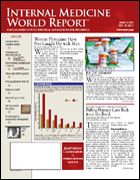The Role of Zinc Supplementation in Middle-aged Men
The Role of Zinc Supplementation in Middle-aged Men
Zinc is an essential mineral that plays a vital role in numerous enzymatic reactions and in the proper functioning of zinc-dependent hormones. Previous research has demonstrated that low dietary zinc intake decreased bone mineral density and increased the risk of osteoporosis in men.
Suboptimal dietary zinc intake has also been shown to increase susceptibility to fractures
in middle-aged and elderly men. In young men, short-term dietary zinc depletion has been
correlated with reduced serum testosterone concentrations, seminal volume, and total seminal zinc loss per ejaculate. In addition to low bone mass, insufficient dietary zinc can reduce physical
function and performance (Am J Clin Nutr. 2005;81:1045-1051). Estimates suggest that dietary zinc intake s inadequate in 1 of 5 men aged 19 to 50 years in the United States. A new study (the
Zenith study) investigating the effects of moderate zinc supplementation has shown that even short-term, moderate-dose supplementation with this mineral can increase exchangeable zinc pool (EZP) masses in middle- aged men and improve their overall health (Am J Clin Nutr. 2005;82:103-110). More than 90% of total body zinc is located primarily in muscle and bone, while <10% exchanges rapidly with the plasma. The EZP is the aggregate of all the pools that exchange with zinc in the plasma within 48 to 72 hours. In adults, the size of the EZP is positively
correlated with dietary zinc intake, daily absorbed zinc, and fecal excretion of endogenous zinc.
The Zenith study included 48 healthymen, aged 58 to 68 years, who were randomly assigned to 1 of 3 groups: daily supplementation with 15 or 30 mg of supplemental zinc or placebo. After 6
months, the men were admitted to a hospital for an overnight fast, and a urine sample was obtained the next morning. They were then given an intravenous infusion of the zinc radioisotope 70Zn in 15 mL of saline solution, after which a lood sample was obtained for testing. For the next 10 days, the plasma zinc disappearance curve was measured. After 6 months of treatment, plasma zinc concentrations increased significantly in the group receiving supplemental zinc,
but not in the placebo group, while erythrocyte zinc concentration and urinary zinc excretion did not differ significantly between the 3 groups (Table). Measurement of 70Zn isotopes exchange
with total plasma zinc showed that both the EZP and the EZP adjusted for fatfree mass increased significantly with zinc supplementation. The EZP was 158 mg in the 30-mg zinc group, 154 mg in the 15-mg zinc group, and 143 mg in the placebo group. “We showed that the exchangeable zinc pool mass increased by [approximately] 10% to 15% with a moderate zinc supplementation
of 30 mg/day,” wrote Christine Feillet-Coudray, PhD, of the Centre de Recherce en Nutrition Humaine d’Auvergene, Unité Maladies Métaboliques et Micronutriments, INRA, St. Genès Champanelle, France, and colleagues.
